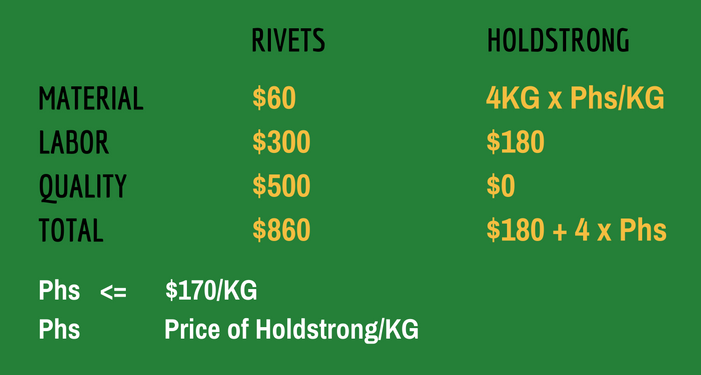Figuring out what to charge for your product may seem as simple as adding up what it costs to make plus a percentage you call profit. Unfortunately, this “markup” or “cost-plus” method is common and can result in money left on the table and unnecessarily slower future growth.
Although things like market share, large margin above costs, or to follow the price set by your competitors are all factors to be considered in your pricing, they are not the ultimate goal.
The goal of pricing is this: To maximize the long-term profit of an offering based on the value your offering provides to customers.
Nothing more, nothing less. Your only constraint is determining the price that will deliver the highest profit over the lifetime of the product or service. There are a lot of factors that go into that equation though and the highest price may not be the profit maximizing price.
The way to reach this goal is through value pricing.
Where Does the Value Price Come From?
It certainly doesn’t come from the amount it costs to make your offering. It doesn’t come from undercutting your competitor’s prices. (Besides, how do you know your competitor got it right?)
The optimum price starts how much value your offering provides customers relative to their other alternatives. A majority of businesses do not take this into consideration and wind up underpricing products. They trade market value for lower margins, leaving them with less money to serve the customer or develop future offerings.
Some businesses go the other way and price their solutions too high. You might be overpricing if:
- Customers decide against you based on price too often.
- Your competition can win buyers simply by undercutting you.
- Closing deals is harder; the sales cycle is longer, and the cost of selling to your prospects is rising.
Value pricing comes from answering some vital questions.
Setting Your Value Price
First, you need to answer a few questions:
- What is your differentiation?
- How sustainable is that differentiation?
- What are your prospects’ alternatives to solving their business problems?
- How much value is created for your customers from your unique capabilities measured in dollars and cents?
Next, calculate your maximum price.
Maximum Price = (Value You Create) – (Value of Next Best Alternative) + (Price of Next Best Alternative)
You do not charge your maximum price, though, because then the buyer has no incentive to invest in your solution. You need to share some of the value your solution creates to sweeten the deal.
Other elements you must take into consideration when setting your optimal price include:
- Sensitivity to switchover costs: are customers willing to switch vendors every time they receive a small price reduction?
- Market momentum: The perception of an obsolete technology or limited product lifecycle can influence buyer decisions.
- Market developments that influence any element of the maximum pricing formula.
Example of Setting Price by Value
“HoldStrong” (a fictional company) makes a metal-to-metal bonding adhesive that is powerful enough to hold international shipping containers together.
Currently, HoldStrong’s prospects use an alternative product: rivets.
The total cost of using rivets includes the cost of the rivets, drilling holes for the rivets, placing the rivets, and testing and repairing leaks caused by the drilling and placement process.
Total Costs = Rivets + Labor + Quality Control (Leak Testing and Repair)
If the prospect uses HoldStrong’s adhesive to replace the drilling and rivets, QC testing would no longer be needed.
Total Costs = Adhesive + Labor
Here is the approach you would use to calculate the maximum price of Holdstrong adhesive (Phs).

As you can see from the chart, the maximum price point for the adhesive is $170 per kilogram. HoldStrong then chooses a price to value with the customer considering switching costs, ability of other adhesives manufacturers to replicate their offering, and other factors in an effort to maximize the long-term profitability of the product.
Conclusion
It’s not easy to price an offering using value pricing, but then the easy way often isn’t the best way.
You may never have complete or perfect information, but if you focus on your solution’s differentiation and sustainability, you will be able to set a price that encourages your company’s future growth while sharing value with your customers.















